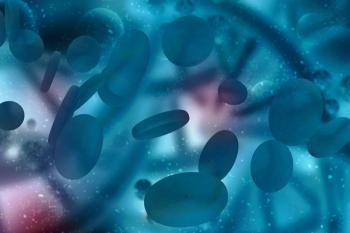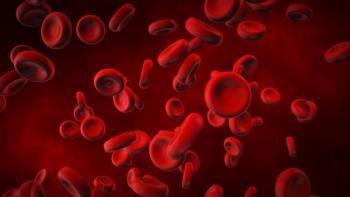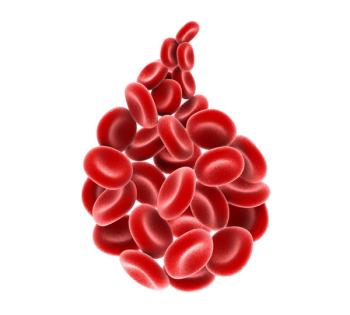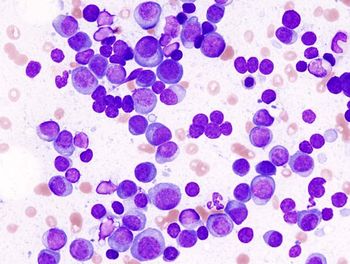
Adjuvant Nivolumab Provides Sustained Benefit in Resected Esophageal/GEJ Cancer
Five-year follow-up confirms adjuvant nivolumab's sustained disease-free and distant metastasis-free survival benefits in resected esophageal/GEJ cancer post-CRT.
Adjuvant nivolumab (Opdivo) continued to demonstrate sustained benefits in both disease-free survival (DFS) and distant metastasis-free survival (DMFS) after 5 years of follow-up in patients with resected esophageal cancer (EC) or gastroesophageal junction cancer (GEJC) who underwent neoadjuvant chemoradiotherapy (CRT), according to long-term follow-up results from the phase 3 CheckMate 577 trial (NCT02743494).1 The primary overall survival (OS) analysis, though not statistically significant, showed prolonged OS and higher 5-year OS rates that suggested a clinically meaningful benefit when coupled with an adjusted benefit analysis accounting for subsequent therapies.
The study, presented by Ronan J. Kelly, MD, MBA, FASCO, at the
Findings from CheckMate 577 were initially presented at the
“Based on these results, nivolumab was globally approved for the adjuvant treatment of patients with resected esophageal or GEJ cancer and, to date, remains the
Study Design and Key Findings
CheckMate 577 is a global, phase 3, randomized, double-blind, placebo-controlled trial. It enrolled 794 patients with stage II to III esophageal or GEJ adenocarcinoma or squamous cell carcinoma who had undergone R0 resection and had residual pathologic disease. Patients were randomly assigned 2:1 to receive nivolumab for 1 year or placebo. The primary end point was DFS, with OS as a secondary end point.1
At a median follow-up of 78.3 months (range, 60.1–96.6), the DFS benefit was sustained, with median DFS doubling from 10.8 months in the placebo arm to 21.8 months with nivolumab (HR, 0.76; 95% CI, 0.63-0.91; P =.1064). DMFS also favored nivolumab, with the median DMFS increasing from 14.6 months to 27.3 months (HR, 0.75; 95% CI, 0.62-0.90).
Overall Survival and Subgroup Analysis
The final analysis of OS showed a clinically meaningful improvement with nivolumab, extending median OS by 16.4 months and resulting in higher 5-year OS rates compared with placebo, although statistical significance was not met in the primary analysis. OS rates at 3 and 5 years with nivolumab vs placebo were 57% vs 50% and 46% vs 41%, respectively. The OS curves began to separate around 18 months, with a 5%-7% improvement in OS rates between the 3- and 5-year marks.
Subgroup analysis revealed trends toward OS benefit with nivolumab across most subgroups. Notably, the improvement was more pronounced in EC (HR, 0.69) compared with GEJC (HR, 1.14). For the first time in this setting, PD-L1 CPS emerged as an important factor: patients with PD-L1 CPS ≥ 1 showed an improvement in OS (HR, 0.79), while those with CPS < 1 derived little to no benefit (HR, 1.40).
Kelly cautioned that these subgroup analyses are exploratory due to small sample sizes.
Impact of Subsequent Therapy and Safety
An imbalance in subsequent anticancer therapy was observed, with 60% of patients in the placebo arm receiving it compared with 46% in the nivolumab arm, with a respective 5% and 15% going on to receive another line of immunotherapy. An ad hoc analysis adjusting for this confounding effect revealed an adjusted OS hazard ratio of 0.73, suggesting that the OS benefit was impacted by this imbalance.
In terms of safety, nivolumab was well tolerated, with most treatment-related adverse events being grade 1 or 2. No treatment-related deaths occurred.
References:
- Kelly RJ, Ajani JA, Kuzdzal J, et al. Adjuvant nivolumab in resected esophageal or gastroesophageal junction cancer (EC/GEJC) following neoadjuvant chemoradiotherapy (CRT): First results of overall survival (OS) from CheckMate 577. J Clin Oncol. 2025;43(suppl 16):4000. doi:10.1200/JCO.2025.43.16_suppl.4000
- Kelly RJ, Ajani JA, Kuzdzal J, et al. Adjuvant nivolumab in resected esophageal or gastroesophageal junction cancer (EC/GEJC): First results of the CheckMate 577 study. Ann Oncol. 2020;31(S1193-S1194):LBA9_PR. doi:10.1016/j.annonc.2020.08.2299
- U.S. Food and Drug Administration approves Opdivo® (nivolumab) as adjuvant treatment of completely resected esophageal or gastroesophageal junction cancer in patients who have received neoadjuvant chemoradiotherapy. News release. Bristol Myers Squibb. May 20, 2021. Accessed May 31, 2025. https://bit.ly/2Sdail2
Newsletter
Stay up to date on recent advances in the multidisciplinary approach to cancer.

















































































